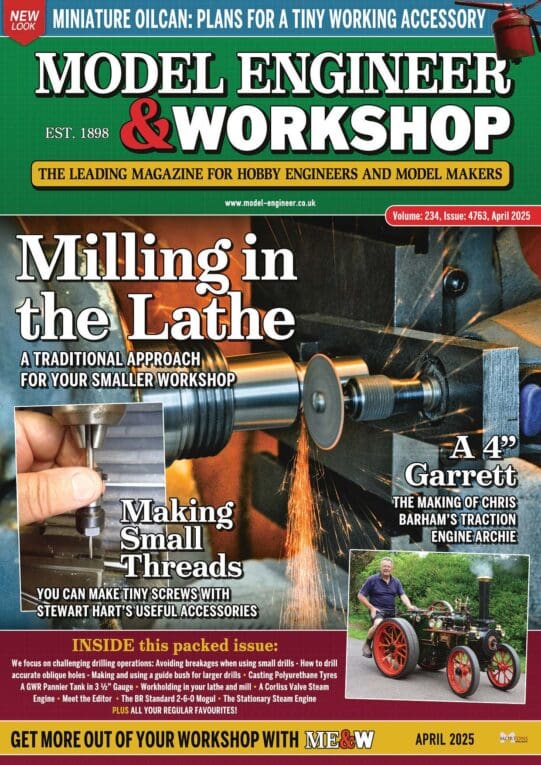Perhaps I should have mentioned that my u3 is powered by a variable drive scooter motor and has vee pullies and round fusible belts. …
dave8
The motor and drive train are important because they decide how power and torque are available at the cutter. In principle, putting a more powerful motor on a machine will enable it to remove more metal faster, but overdoing it may not work out that way. Belts slip, bearings wear, the carriage lifts, the tool-post twists, the cutter bends, and so do the head and ways. Small lathes aren’t particularly strong or rigid.
How powerful is the scooter motor? The U3’s designer deliberately specified a rather small motor: probably proportioned to match the rest of the machine and improve precision and longevity. Maybe the scooter motor has taken the U3 out of it’s comfort zone, so counter-intuitively it doesn’t compare well with a factory Sherline?
Dave
Hi Dave,
All good points. The motor attached to my U3 before reconditioning was a 1/4 HP Capacitor Start Induction motor. This was hung on the existing Motor Bracket. There is no doubt this was inducing a twisting motion on the bedway.
The Hoover Belt was so tight it had distorted the plastic pulley. The motor was absolutely full with brass swarf despite all the cooling vents being taped over with Parcel Tape.
No doubt the previous owner had thought this was an improvement.
The U3 I have also sports a Scooter Motor, but I have set my PWM to mimic the output of the original two speed U3 Motor. This way I can change the belts to get the same speeds as the Speed Advice Plate on the Headstock. This works for me 99 times out of a 100.
Regards
Gray,
Generally,
When it comes to Turning Hardened steel, this is something I would never contemplate on the U3. It would be far better to grind the part using something like a Dremel. In my experience of turning Hardened tool steel there are three requirements. The first of these is rigidity, then the correct insert followed by a decent amount of power.
Sadly the Unimat is lacking in some of these departments and I doubt the designer never imagined this in his or her wildest dreams. At the time this machine was designed Carbide Insert tooling was only just coming into use in Industry. A lot of companies were still using inserted HSS face mills etc or Brazed Carbide tip tools. Whilst this type of Brazed tooling is widely seen to be used on the Unimat, this machine was none the less designed to use HSS.
There used to be a programme on the BBC called “Engineering Craft Studies”. As first year apprentices we would watch this every Friday morning. Slow speed footage of tools cutting is of great value as to what is happening at the cutting edge. A dull edge will require more power to remove metal.
One good thing the Unimat taught me from early on is when the tool needs re-sharpening.
Carbide inserts have far from a sharp edge. Under a microscope the standard edge is rounded, (that is not the Tip radius). That is unless they have been subsequently ground prior to sale, and these inserts are expensive.
Regards
Gray,





